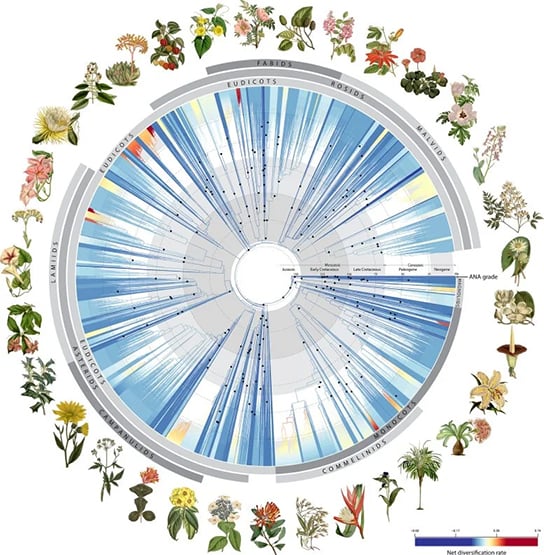279 scientists stunned the world by creating an incredible ‘tree of life’ of phuldra plants with the help of more than 1 billion letters of genetic code.
Journal Nature An international team of 279 scientists has created a stunning ‘Tree of Life’ using 1.8 billion letters of the genetic code of more than 9,500 flowering plant species, according to a research study published in .
A great achievement
Using this ‘tree of life’ will help biologists and botanists around the world understand how flowering plants evolved over millions of years, and how they came to dominate the Earth’s climate over other plants. . It should be noted that flowering plants alone account for about 90 percent of all known plants on Earth and are found virtually everywhere on the planet.
This is a huge and amazing amount of data that scientists around the world will have open access to, and will be able to combine it with artificial intelligence to predict which plant species are in which species. Molecules with medicinal properties may be present.


The Tree of Life will also help predict how pests and diseases will affect plants in the future, and help better understand these diseases.
Amazingly extensive research
The research, led by scientists at the Royal Botanic Gardens, Kew, London, involved 138 organizations internationally, and produced a ‘Tree of Life’ 15 times larger than previous comparable studies. It is done with the help of more data. And of the flowering plant species used for this purpose, there are more than 800 species whose DNA has never been analyzed before.
The scientists involved in this research have said that the data they have compiled will help identify new species of flowering plants, improve the classification of plants, and develop new medicines. Compounds can be discovered, and plants can be protected in the face of climate change and biodiversity loss.
The great flora of flowering plants
Scientists say that this ‘tree of life’ has a great breadth of biodiversity, is so vast, and includes so many and varied flowering plants, that just as the table for a given period Based on the position of an element in the periodic table, its properties can be predicted, similarly the location of a flowering plant species in the ‘Tree of Life’ will allow researchers to predict its properties.


It would take a single computer 18 years to process the data collected by this research. This has been hailed as a major step towards creating a ‘Tree of Life’ for all 330,000 known species of flowering plants.
The researchers made 2 important points
“To decode the information hidden in millions of DNA sequences, analyzing this unprecedented amount of data was a huge challenge,” said Alexander Zontini, research fellow at the Royal Botanic Gardens. But the challenge also provided us with a unique opportunity to reexamine and expand our knowledge of the plant ‘tree of life’, opening a new window into the complexity of plant evolution. “
“Every time we go into the forest, flowering plants welcome us and feed us and clothe us,” said biologist Stephen Smith, a professor in the Department of Ecology and Evolutionary Biology and co-author of the study. Constructing the ‘tree of life’ of these flowering plants was a challenge and goal that evolutionary biologists faced for more than a century. This project has now provided an extensive data set covering most species of flowering plants.”
Another feature
An important feature of this Tree of Life of flowering plants is that it also includes data on genes from 200 plant fossils. And DNA was obtained from dried plants that Charles Darwin and Joseph Hooker had saved during their research, and DNA had not yet been discovered in their lifetime.
Comments
(function(d, s, id) {
var js, fjs = d.getElementsByTagName(s)[0];
if (d.getElementById(id)) return;
js = d.createElement(s); js.id = id;
js.src = “//connect.facebook.net/en_US/sdk.js#xfbml=1&appId=1763457670639747&version=v2.3”;
fjs.parentNode.insertBefore(js, fjs);
}(document, ‘script’, ‘facebook-jssdk’));



